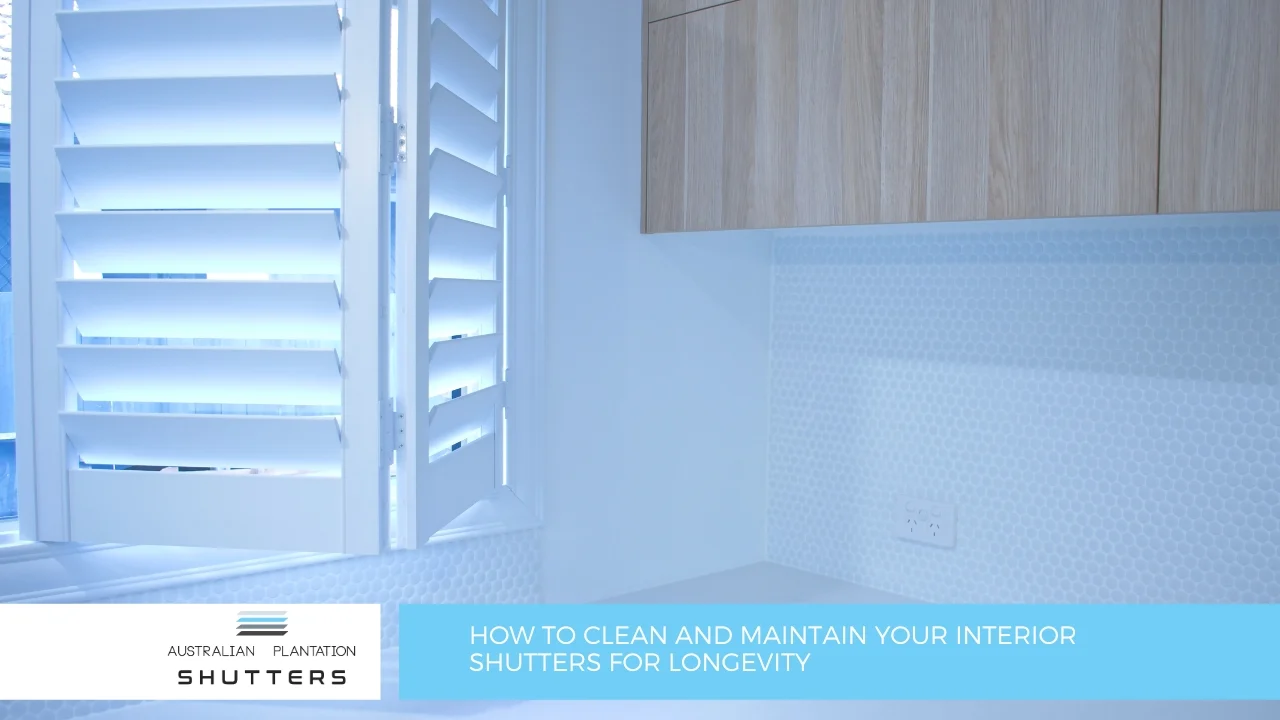
Dirty shutters make rooms look untidy and can shorten their lifespan. Dust, moisture, and daily use all cause gradual wear that many homeowners overlook. Ignoring small maintenance steps often leads to discolouration, stiff hinges, or costly repairs.
The good news is shutters only need simple care. Regular cleaning and quick checks protect their finish and keep panels moving smoothly. With a basic routine, shutters stay functional and attractive for decades.
Dust gathers quickly on louvres and frames. If left, it can dull the finish and settle in corners where it becomes harder to remove. Weekly dusting keeps shutters looking clean and helps maintain smooth movement.
A microfibre cloth is effective for wiping each blade. A feather duster works well for quick touch-ups, while a vacuum with a soft brush attachment removes heavier dust. Start at the top and work down to avoid spreading debris over cleaned areas. Tilt the louvres as you go so both sides are covered.
This routine prevents build-up and reduces the need for stronger cleaning methods later. A few minutes of weekly care is enough to preserve both the look and function of the shutters.
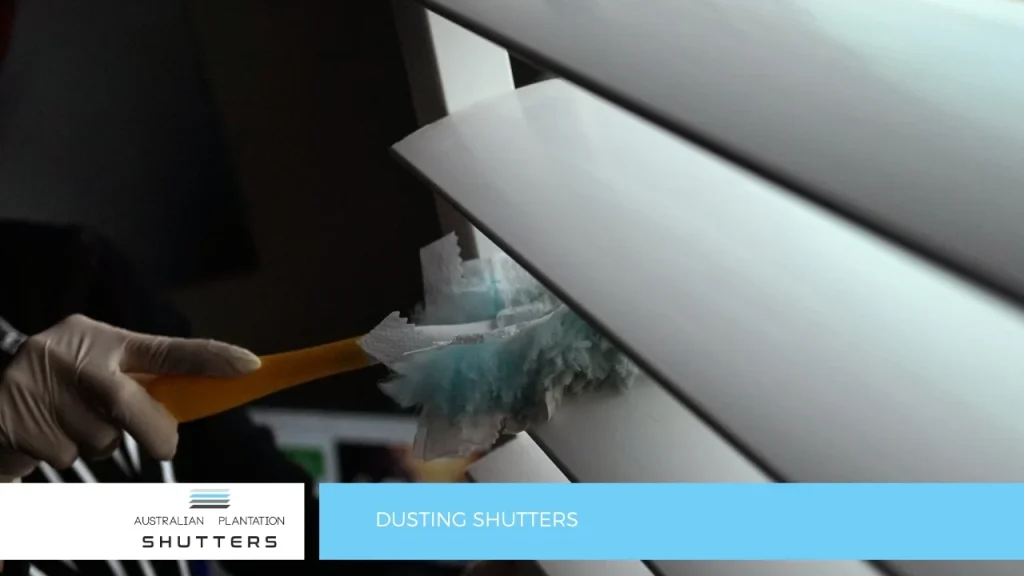
When dusting is not enough, a damp cloth helps remove smudges and stubborn dirt. Lightly moisten the cloth with clean water and wipe across the louvres and frames. Always avoid soaking the material, as excess water can leave marks or cause warping.
After wiping, dry the surface straight away with a clean cloth. This step prevents water spots and keeps the finish intact. For tougher stains, a small amount of diluted mild detergent can be used, but it should be applied sparingly. Harsh chemicals and abrasive cleaners should never be used, as they can damage coatings and shorten the life of the shutters.
This simple method ensures dirt is removed without harming the surface. By combining dusting with occasional damp wiping, shutters remain in good condition without the need for more aggressive cleaning.
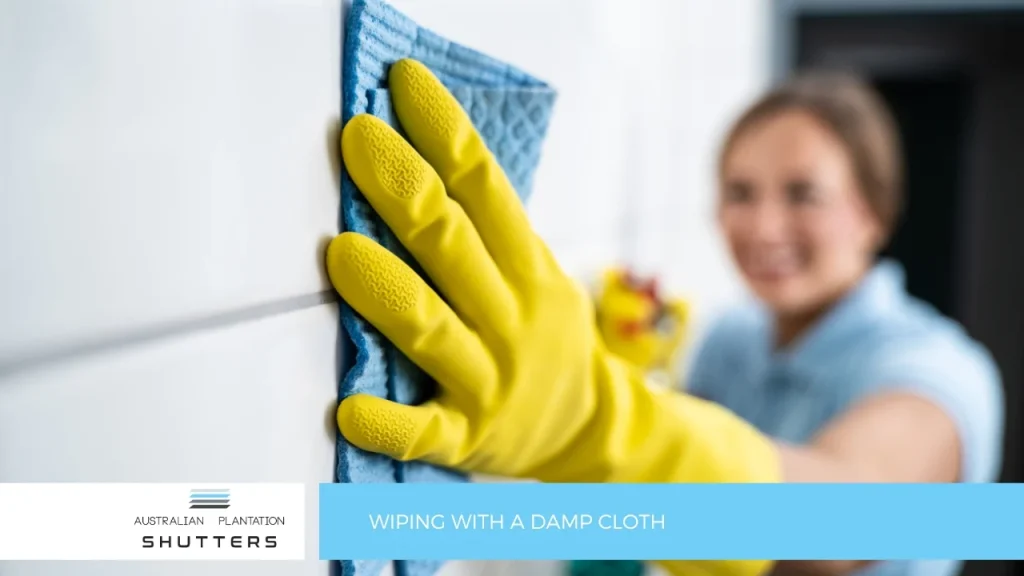
A deeper clean every few months helps keep shutters in top condition. Begin by opening the panels fully so all surfaces are easy to reach. Wipe the frames, handles, and corners where dust often collects. Pay attention to the areas around hinges and tracks, as these can accumulate grime over time.
Use a soft cloth and mild detergent solution if needed, but rinse and dry the surfaces straight away. Avoid scrubbing too hard, as this can damage finishes. Cleaning hidden areas reduces the risk of wear and prevents stiffness in moving parts.
This routine is also a good time to inspect the shutters. Check for any marks, loose fittings, or early signs of damage. Spotting small issues during regular cleaning helps prevent expensive repairs later and ensures the shutters continue to operate smoothly.
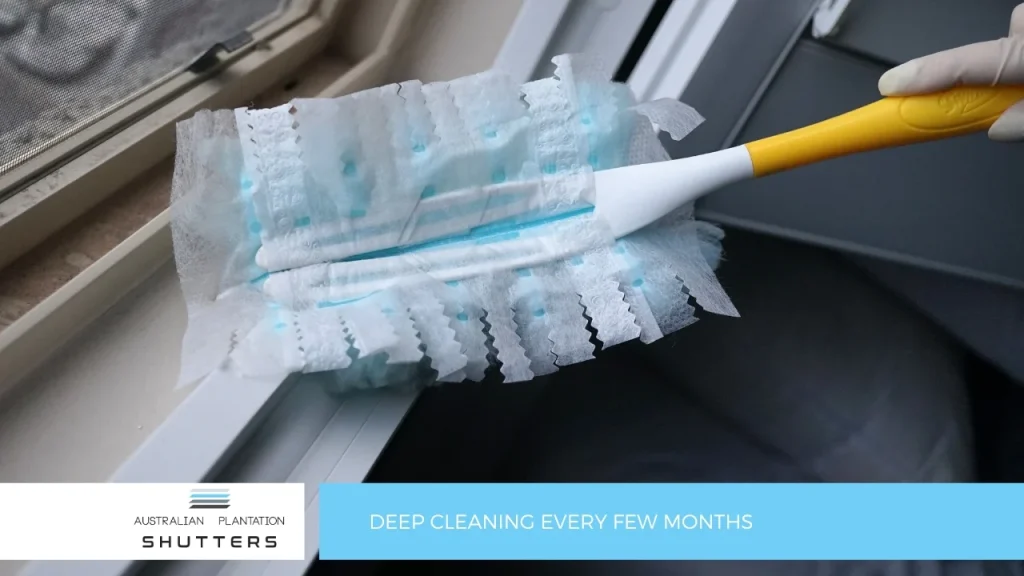
Hinges and tracks are essential for smooth operation. Over time, dust and debris can gather in these areas, causing stiffness or noise when opening and closing the shutters. Regular attention prevents these problems and helps extend their lifespan.
For hinged shutters, wipe the hinges with a dry or lightly damp cloth to remove dirt. If movement feels tight, apply a small amount of silicone spray. Avoid using oil-based lubricants, as they can attract dust and create build-up.
For sliding shutters, check the track every few weeks. Remove any debris with a vacuum or soft brush, then wipe with a clean cloth. A thin layer of silicone spray can also be used if the panels do not slide easily.
These simple checks ensure panels move without resistance. Addressing stiffness early avoids strain on fittings and keeps shutters operating as intended.

Shutters in kitchens, bathrooms, or sun-heavy rooms are exposed to more wear. Steam, splashes, and strong sunlight can lead to swelling, fading, or damage over time. Taking a few simple steps helps reduce these risks and maintain the condition of the shutters.
In areas exposed to water, remove condensation or splashes as soon as possible. Keeping surfaces dry prevents warping or peeling. In rooms with high humidity, improve airflow through ventilation to lower moisture levels.
For windows facing strong sunlight, adjust the louvres during peak hours. This limits UV impact on the finish and slows fading. Changing the angle of the louvres also spreads light more evenly, preventing uneven wear.
Managing exposure to moisture and sunlight helps shutters stay functional and attractive for many years. Preventive care is straightforward and avoids the need for major repairs later.
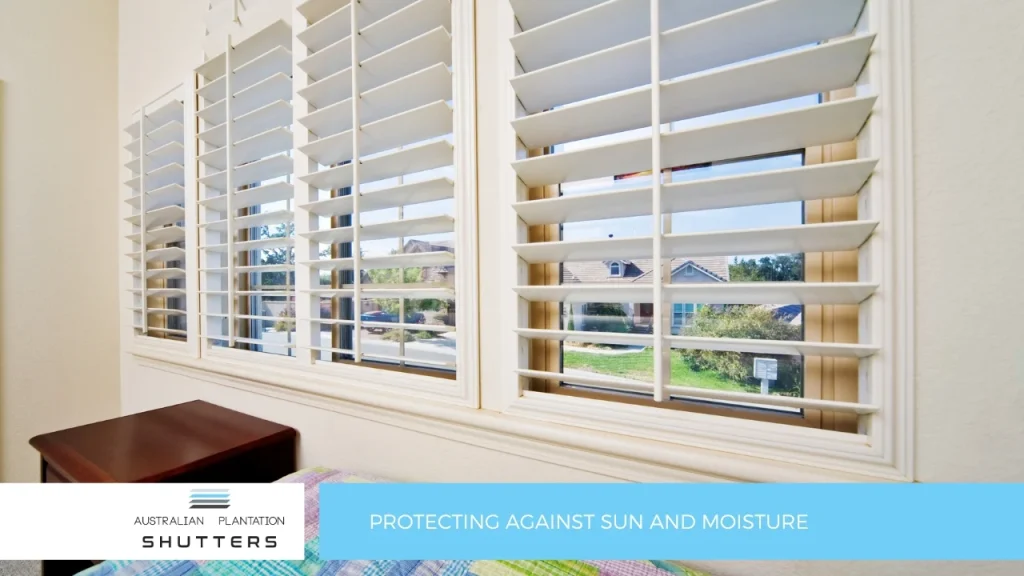
A few small checks help keep shutters in good condition. Tighten any loose screws or fittings to prevent further wear. Open and close each panel to confirm they move smoothly without sticking or resistance. If timber shutters start to show signs of fading or rough surfaces, apply a fresh coat of paint or finish to restore protection.
Inspect the panels during routine cleaning to spot early issues. Look for marks, cracks, or parts that no longer sit evenly. Addressing these problems early prevents larger repairs later.
Keeping up with these simple checks ensures the shutters remain secure and functional for many years. Combined with regular cleaning, they provide both style and lasting performance in the home.
Interior shutters remain durable and attractive when maintained with a simple routine. Regular dusting, gentle wiping, and scheduled deep cleaning prevent wear. Checking fittings, hinges, and tracks ensures smooth movement and long-term reliability. Consistent care is easier and more effective than repairing damage once it occurs.
For advice on maintaining existing shutters or choosing new ones, contact Australian Plantation Shutters. Call us to speak with a local specialist and find shutters built to last.
Yes. A quick weekly dust and an occasional wipe is usually enough.
Vacuum with a brush attachment, then wipe with a soft microfibre cloth.
Yes, but dilute well and use sparingly. Harsh cleaners should be avoided.
No. Regular cleaning prevents discolouration caused by grease and dirt.